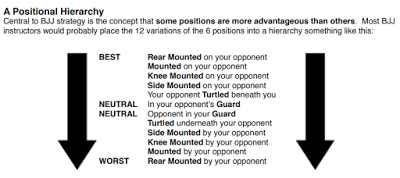About the ways to surrender in a Brazilian jiu jitsu fight
About the ways to surrender in a Brazilian jiu jitsu fight Although it may seem obvious to those who have been in Brazilian jiu jitsu for some time, for those who are starting out it is not so easy to find a way to express that we give up due to a submission, danger of injury or simply due to fatigue or overwhelm. For this reason, it is important to know how to express that you give up in a Brazilian jiu jitsu fight. Possibly the most used way is to hit lightly, with the palm of the hand on some part of the opponent's torso or on his arms. The second way can be to kick against the ground in case both of our arms are blocked. And the third and surely the most efficient is to express it verbally saying "Tap". As we said initially, it is very important to recognize that many times we must indicate that we want to stop the fight not only because we are caught in a submission but also to communicate that a finger has been trapped, that we are going to fall badly or that we ar...
